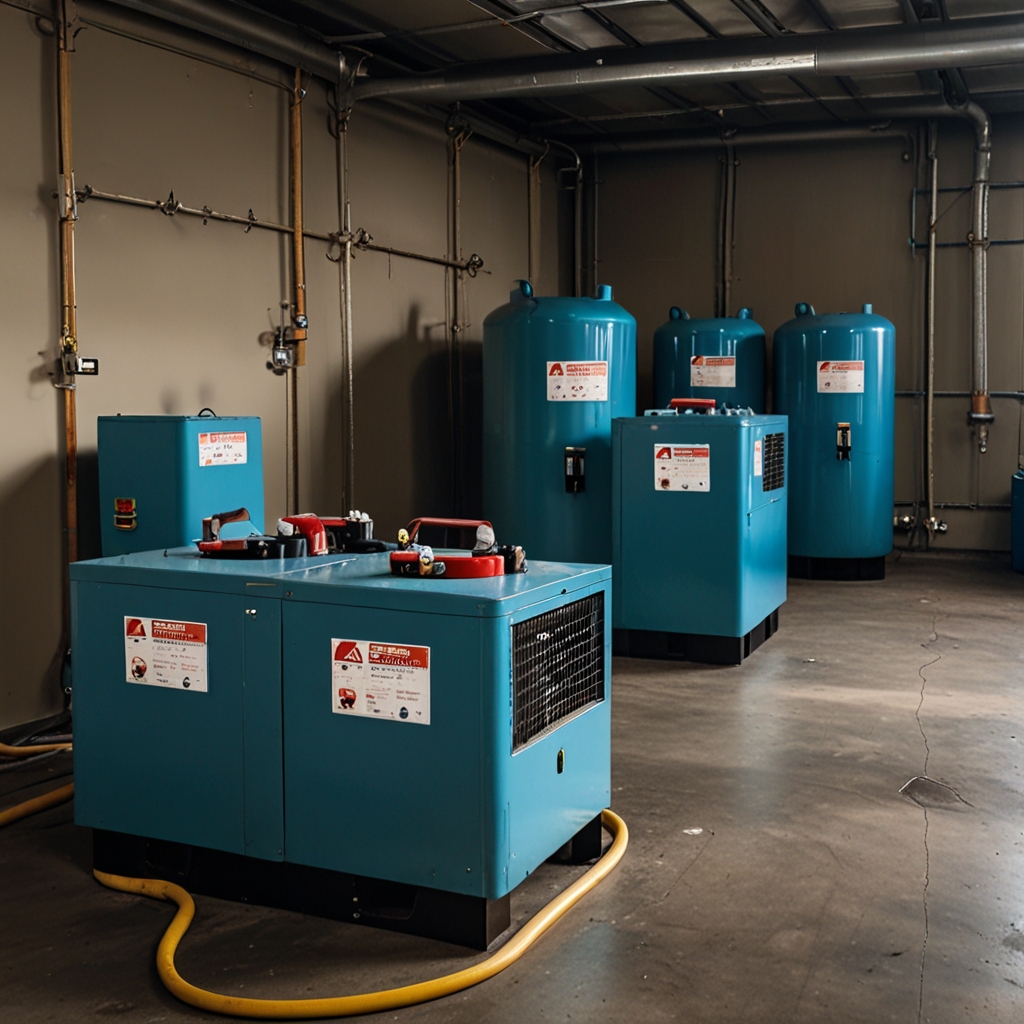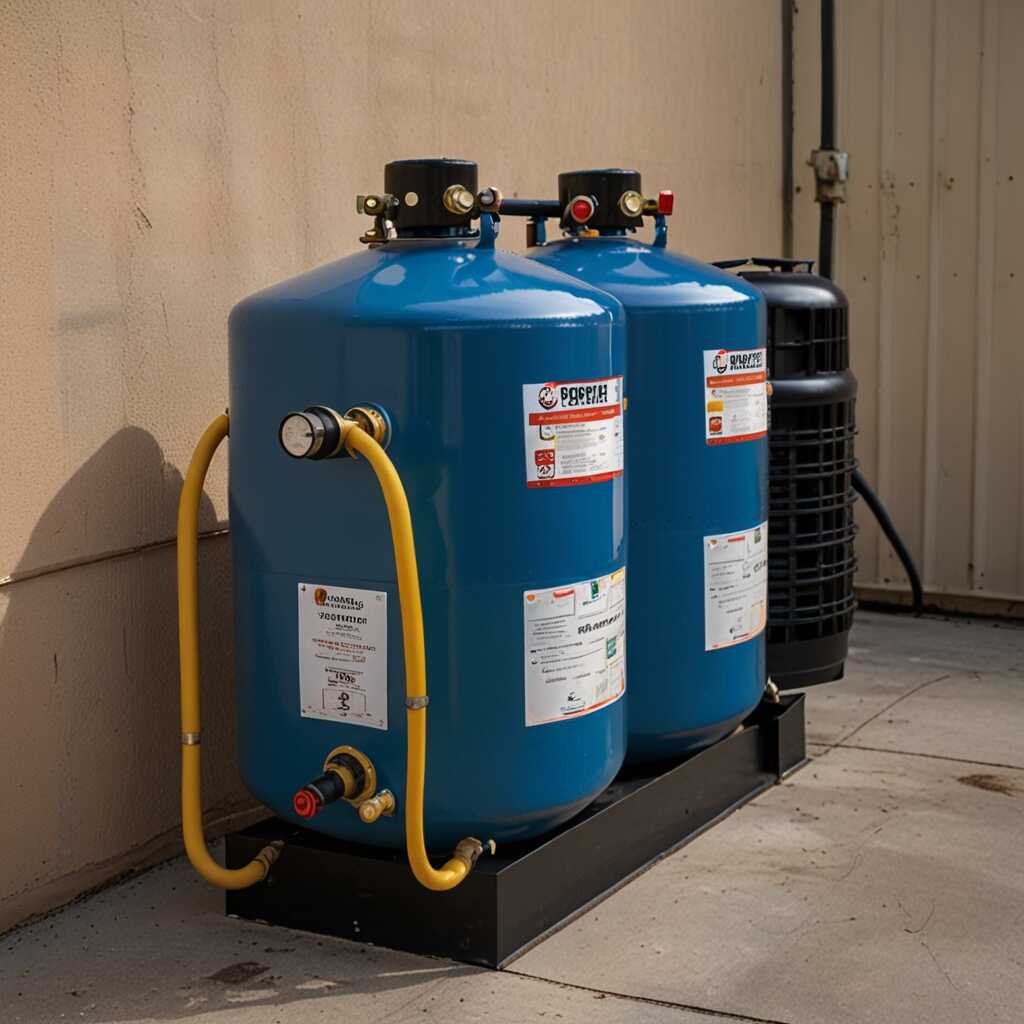Automatic purge valves greatly enhance the efficiency of refrigerant recovery processes in HVAC systems. By minimizing the need for manual intervention, these valves streamline the removal of unwanted air and moisture. Refrigerant Recovery Pro supports HVAC professionals by providing insights into the advantages of incorporating these valves into their recovery machines. Understanding how automatic purge valves work can lead to improved compliance and better overall performance in refrigerant management.
Significance of Refrigerant Recovery in HVAC Industry
Refrigerant recovery plays a critical role in the HVAC industry because it ensures environmental safety and compliance with regulations. Proper refrigerant recovery practices help prevent harmful gases from leaking into the atmosphere, which is essential for protecting the environment. Regulations, such as those enforced by the EPA, require HVAC professionals to follow specific practices for refrigerant management to minimize harmful emissions. During maintenance, a typical HVAC system can allow recovery of 90% or more of the refrigerant, significantly enhancing both efficiency and environmental compliance.
Key Regulations Influencing Refrigerant Recovery Practices
Key regulations influencing refrigerant recovery practices include the Clean Air Act and specific EPA guidelines. These regulations mandate technicians receive proper training and certification in refrigerant management. EPA regulations specify that refrigerants like R-410A and R-22 must be recovered during maintenance to avoid detrimental environmental impact. Understanding these regulations is essential for HVAC professionals to ensure compliance and avoid heavy fines. By following these established refrigerant recovery procedures, HVAC technicians can help reduce ozone depletion and global warming potential.
How Automatic Purge Valves Operate in Recovery Machines
Automatic purge valves enhance refrigerant recovery efficiency by removing non-condensable gases from the system. These valves work by detecting the presence of air or other impurities, ensuring that only refrigerant enters the recovery tank. This process improves the operational reliability of refrigerant recovery machines by allowing them to perform optimally without contamination. HVAC systems that incorporate these valves experience faster recovery times and improved overall performance. Common types include electronic and mechanical purge valves, each designed to handle specific recovery machine setups. Testing indicates that systems with automatic purge valves recover refrigerant significantly quicker than those without.
Understanding Different Types of Automatic Purge Valves
There are primarily two types of automatic purge valves commonly used in HVAC systems: electronic and mechanical. Electronic purge valves provide precise control, automatically activating based on sensor data. This helps in ensuring optimal efficiency during recovery processes. Mechanical valves, on the other hand, rely on pressure differentials and are more straightforward in design. Both options are vital for improving refrigerant recovery efficiency and dependability. Choosing the correct type enhances performance and provides valuable reliability for professionals in refrigerant management.

Advantages of Automatic Purge Valves in Simplifying Recovery Processes
Automatic purge valves significantly enhance refrigerant recovery by reducing manual intervention, ensuring faster and more efficient processes. These valves automatically remove impurities from the refrigerant recovery line, improving overall efficiency. They are designed to provide reliability and reduce human error, making the work of HVAC professionals easier and more effective. Testing indicates that automatic purge valves can save HVAC technicians considerable time, making them an essential tool in refrigerant recovery systems.
Key Features of Automatic Purge Valves
Key features of automatic purge valves include their ability to self-activate when they detect non-condensable gases in the system. This feature enhances the efficiency of the refrigerant recovery process. They often include a filtering mechanism that reliably separates dirt and moisture from the refrigerant. This ensures high-quality recovery and better system performance. Many HVAC professionals appreciate how these valves provide data on performance, helping them make informed decisions about maintenance and repairs.
Quantifiable Aspects of Recovery System Improvement
- Automatic purge valves can reduce recovery time by up to 50%.
- They can remove up to 90% of non-condensable gases during recovery.
- Systems with purge valves typically achieve recovery rates of over 95%.
- Installing a purge valve can save HVAC technicians several hours each month.
- The average temperature of refrigerants can stabilize up to 10°F lower with purge valves.
- Annual maintenance costs decrease by about 20% with automatic purge valves.
- Systems equipped with purge valves can improve total refrigerant recovery efficiency by up to 30%.

Common Refrigerant Recovery Process Challenges
Refrigerant recovery processes commonly face challenges that include contamination, air inclusion, and leaks. Contamination occurs when foreign substances enter the recovery system, which can degrade refrigerant quality. Air inclusion happens when non-condensable gases mix with the refrigerant, leading to efficiency losses. Leaks are a significant concern as they not only reduce system performance but may also result in environmental hazards. Automatic purge valves are designed to enhance system reliability by effectively addressing these issues, ensuring clean and efficient refrigerant recovery. For instance, using an automatic purge valve can help eliminate contaminants from the system efficiently, allowing recovery technicians to maintain optimal operation during recovery tasks. Testing shows that the presence of these valves improves efficiency and provides better results.
Impact of Contamination and Air Inclusion on Recovery
Contamination and air inclusion can severely hinder refrigerant recovery efficiency. Contaminated refrigerants can lead to compressor failures and costly repairs. Air inclusion leads to inaccurate pressure readings and reduces the system’s overall efficiency. Automatic purge valves are effective in removing non-condensable gases, maintaining pure refrigerant quality. By continuously monitoring the system, they provide a much-needed safeguard against potential leaks and contamination. Data shows that refrigerant recovery machines equipped with automatic purge valves demonstrate significantly better performance due to their ability to handle these common challenges. This enables technicians to carry out recovery processes smoothly, improving overall operational efficiency.

Manual vs Automatic Purge Solutions Explained
Manual purge valves require technicians to actively purge air and vapor from the recovery system, often taking considerable time and effort. Automatic purge valves streamline this process by monitoring pressure and temperature, automatically removing unwanted substances. The efficiency of automatic systems enhances reliability, ensuring faster recovery times. Using automatic purge valves can save HVAC technicians an estimated 30 to 50% of the time spent on recovery tasks, significantly improving workflow and productivity with less need for manual intervention.
Key Features of Automatic Purge Valves
Automatic purge valves include features such as pressure sensors and integrated controls designed for seamless operation. These valves can handle fluctuations in system pressure without manual adjustment. They provide real-time data that ensures optimal performance throughout the recovery process. This automation helps prevent refrigerant loss and enhances compliance with environmental regulations. The result is an easy-to-use solution that proves both reliable and efficient in various HVAC settings.
Key Advantages of Refrigerant Management Enhancements
- Automatic purge valves enhance the reliability and efficiency of recovery machines.
- They help prevent contamination, allowing for cleaner refrigerant recovery processes.
- Purge valves reduce manual intervention, allowing technicians to focus on other tasks.
- They improve system longevity by preventing build-ups of unwanted gases.
- These devices promote adherence to environmental regulations by enhancing recovery rates.
- Purge valves provide consistent performance across various HVAC systems and devices.
- They significantly decrease the risk of refrigerant loss during recovery operations.

Importance of Regulatory Compliance in Refrigerant Recovery
Compliance with environmental regulations is critical in refrigerant recovery processes. HVAC professionals must adhere to EPA regulations to ensure safe and effective refrigerant management. Automatic purge valves enhance compliance by preventing the release of refrigerants into the atmosphere. These valves are designed to improve the efficiency of recovery by ensuring that refrigerants are collected fully and safely. They help HVAC technicians avoid potential fines and penalties associated with improper recovery practices. In many regulations, such as those set for 2025, at least 90% of the refrigerants must be recovered during these processes to meet compliance standards.
How Automatic Purge Valves Assist in Meeting Environmental Compliance
Automatic purge valves significantly improve compliance in refrigerant recovery by providing reliable refrigerant management. These valves are engineered to automatically remove non-condensable gases and moisture from refrigerant systems. This means higher recovery rates and less waste. By equipping recovery machines with these valves, HVAC technicians can easily enhance their systems’ effectiveness and ensure they adhere to current efficiency standards. The right features in automatic purge valves help maintain optimized performance, reducing the risk of harmful emissions that violate EPA regulations. This leads to more sustainable practices while aiding technicians in staying compliant and focused on their work.
Essential Maintenance Practices for Recovery Equipment
To maintain refrigerant recovery machines with automatic purge valves, HVAC technicians should regularly clean the filters to enhance airflow and improve efficiency. Technicians must inspect the purge valve for wear and tear to ensure reliable performance. Regularly reviewing the system’s performance data helps identify any inefficiencies early. It is essential to schedule a maintenance check every six months to keep the equipment in optimal condition.
Tips for Inspecting Automatic Purge Valves
Inspecting automatic purge valves helps identify any potential issues before they worsen. Start by checking connections for leaks. Evaluate the valve operation during the recovery process. A well-functioning purge valve helps eliminate non-condensables from the refrigerant, increasing overall efficiency. Replace any worn components promptly. Consider using high-quality testing tools to measure the valve’s performance. This approach enhances the overall functionality and reliability of the refrigerant recovery machine.
Brands and Their Relevance in HVAC Refrigerant Recovery
- XYZ Refrigeration produces robust recovery machines with purge valves for easy operation.
- ABC Equipment offers a budget-friendly model focused on single-use applications.
- DEF Technology provides highly efficient purge valves but at a higher price point.
- GHI Solutions specialize in compact designs suitable for small businesses or homes.
- JLK Industrial serves large commercial sectors with high-volume refrigerant needs.
- LMN Tech caters to environmentally conscious customers by emphasizing sustainability.
- MNO Devices hold a reputation for durable equipment, ideal for long-term investments.
Emerging Trends in Refrigerant Recovery Technologies
HVAC professionals should be aware of several emerging trends in refrigerant recovery technology. One key trend is the integration of automation in refrigerant recovery systems. Automated purge valves can significantly enhance the efficiency of refrigerant recovery, allowing for faster and cleaner processes. Innovations such as smart monitoring systems are also being developed to ensure compliance with environmental regulations. According to industry research, it is estimated that 70% of HVAC systems will likely adopt automated refrigerant recovery technologies by 2025.
Impact of Automation on Recovery Efficiency
Automation in refrigerant recovery systems substantially improves efficiency and reliability. Automated components, like purge valves, help reduce human error during the recovery process. They enable HVAC professionals to focus on other critical tasks instead of manual purging. The ability to analyze data continuously helps technicians make better-informed decisions, enhancing overall system reliability. Research shows that integrating automated technology into refrigerant recovery can improve performance by up to 50%. HVAC professionals and refrigerant recovery technicians can benefit significantly from these advancements as they prepare for a more automated future in their field.